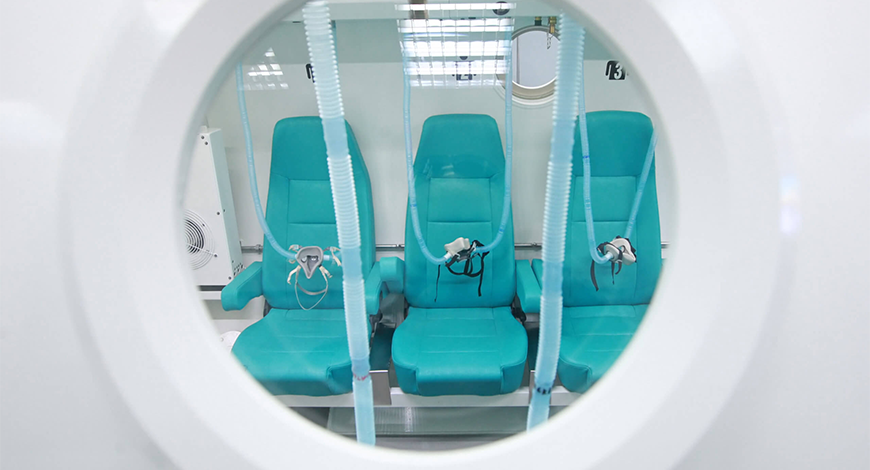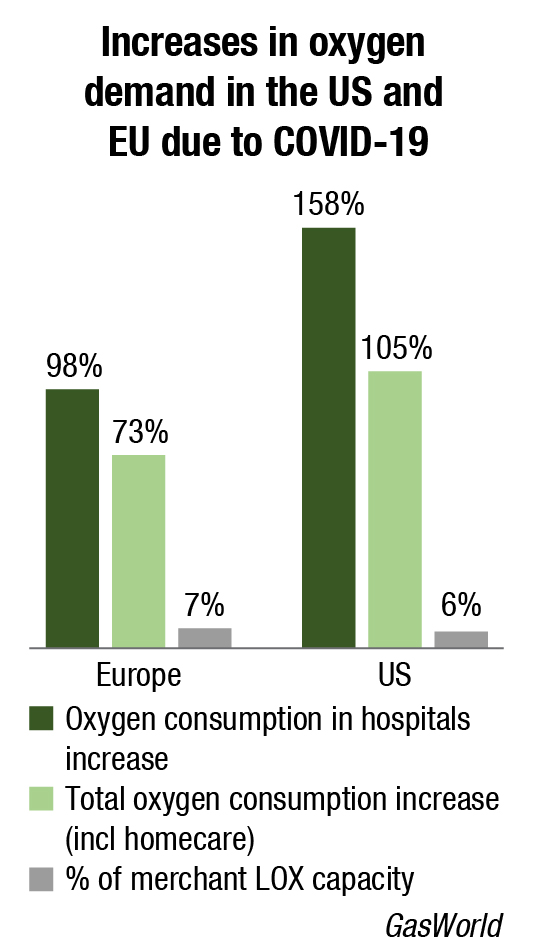COVID-19
Medical oxygen in shortage for the first time in Indian medical history

Oxygen access has been a long-neglected element of health system planning. The COVID-19 pandemic has spotlighted the role of medical oxygen.
 Oxygen therapy is a major pillar in treating patients suffering from SARS-CoV-2 infection. The virus causes silent hypoxia, a condition where oxygen levels in the body are abnormally low. Oximeters have also been in demand so that blood oxygen levels may be monitored.
Oxygen therapy is a major pillar in treating patients suffering from SARS-CoV-2 infection. The virus causes silent hypoxia, a condition where oxygen levels in the body are abnormally low. Oximeters have also been in demand so that blood oxygen levels may be monitored.
Oxygen can be supplied to hospitals through a variety of methods, such as tanks of compressed liquid oxygen (LOX), compressed gas cylinders, on-site pressure swing adsorption (PSA) plants, and oxygen concentrators. Beyond the specific source of oxygen selected, some forms of oxygen supply also require particular products, such as flow splitters, flow meters, tubing, nasal prongs, and face masks. Further, oxygen therapy is used in coordination with pulse oximeters or patient monitors, resuscitators, suction devices, ventilators, and other tools essential for intubation.
Large hospitals in the developed countries and many middle-income countries have onsite liquid oxygen tanks that supply oxygen to the entire hospital. Most hospitals keep some compressed oxygen cylinders as backup in case the main tank stops working.
COVID-19 also accelerated the need for equipment maintenance and careful performance monitoring of system components, including oxygen conversion systems (e.g., ambient air vaporizer that converts liquid oxygen to gas oxygen) within health facilities that manage the flow of gas oxygen direct to patients through bedside piping outlets.
Oxygen supply
Before the pandemic struck, India had the capacity to manufacture 6,900 metric tonnes of oxygen daily, the daily consumption of medical oxygen being 750 metric tonne. Of this, the demand for oxygen for industrial purposes has been stable at 75 percent of the production capacity. Oxygen is a key component in manufacturing processes for steel, chemicals, pharmaceuticals and paper.
As the country’s pandemic surged across the country, hospitals in several Indian states began to feel the shortage, and manufacturers scrambled to plug the gaps in the supply and transportation. Supply for medical oxygen was increased to 2,700 tonnes of medical oxygen per day — almost four times of what it was supplying six months ago.
When the country was under lockdown, the industry was supplying around 70-80 per cent of the oxygen to hospitals and just 20-30 per cent of the production was going for industrial use. Now, with resumption of industrial activity, the industry is supplying about 5,000 tonnes of oxygen every day, of which 2,300 tonnes are for industrial use while 2,700 tonnes are supplied to hospitals.
Market dynamics
In India, there are about 10-12 big manufacturers of medical oxygen, whereas over 500 players own small gas-plants. The large ones include Gujarat-based Inox Air Products, Delhi-based Goyal MG Cases, Kolkata’s Linde India and Chennai-headquartered National Oxygen. Other prominent suppliers of liquid oxygen for hospitals include Air Liquide, Praxair of Linde group, and Nippon Gases.
The manufacturers use cryogenic distillation technique to compress air, feed it into distillation columns and get liquid oxygen. This process takes two-and-half-days.
Measures taken by the government
To meet the immediate demand, the Union Health Ministry, on October 14 through HLL Lifecare invited bids for the procurement of 1 lakh metric tonnes of liquid oxygen for hospitals run by the Centre and states. And attempts are being made to reopen shuttered plants.
The ministry has also begun the process of installing PSA oxygen generation plants in 246 hospitals in 18 states and union territories in the first phase, out of which 67 were at various stages of completion. In the second phase, such plants would be installed in 150 more hospitals across 30 states and UTs.
Considerations in selecting oxygen supply
A mix of oxygen production and storage devices is recommended to deliver oxygen to patients in low- and middle-income countries (LMICs). No single oxygen delivery solution will suffice for the range of treatment approaches required. For example, the commonly used 5 liter per minute (lpm) oxygen concentrator may be appropriate for treating some severe COVID-19 cases but would not be appropriate for many critically ill patients. Therefore, a nuanced approach to supply planning and procurement that accounts for the different oxygen flow rate requirements is used.
Different oxygen sources and storage options may be listed as:
Liquid oxygen tanks. Large hospitals can be equipped with bulk liquid oxygen tanks that are filled periodically with oxygen generated at a plant. This can be a cost-effective option if there are existing LOX plants in the area and delivery logistics can be managed by the LOX producer in a robust manner.
PSA oxygen plant. At larger health facilities, an on-site pressure swing adsorption (PSA) oxygen plant can be installed. Such on-site PSA plants can also be combined with an oxygen compressor in order to fill oxygen cylinders for distribution within the same health facility and other smaller health facilities. An on-site PSA plant requires a higher capital investment and comes with considerable maintenance needs.
Oxygen cylinders. Compressed oxygen cylinders supplied periodically by an oxygen generation plant (ASU with conversion or PSA with oxygen compressor) are commonly viewed as a cost-effective oxygen source. However, cylinder rental fees and delivery costs add up substantially overtime.
Oxygen concentrators. Because they are self-contained, quick to install, and once installed are not dependent on periodic resupply, oxygen concentrators have been the focus of a lot of attention during the COVID-19 pandemic. Patient safety requires an uninterrupted supply of oxygen. Hospitals in many LMICs have power cuts regularly. Concentrators generally do not have backup batteries.
In addition to selecting the right mix of oxygen sources for a given context, it is also important to build redundancy and/or excess supply and backup sources in case of supply chain failure or device malfunction.
Oxygen delivery
Oxygen delivered through different devices creates different amounts of aerosols and pose the threat of nosocomial infection to health-care workers (HCW) and other patients.
The use of individual oxygen delivery methods is tailored to individual patient needs, their availability. Although the aerosol-generating potential poses a threat to HCWs, their use is indispensable in low-resource setup where ICU beds and ventilators are limited in number. In selected patients, by reducing the work of breathing, these devices might alleviate the need for ventilators and possibly lead to lesser aerosol generation due to the reduction in flow requirements.












